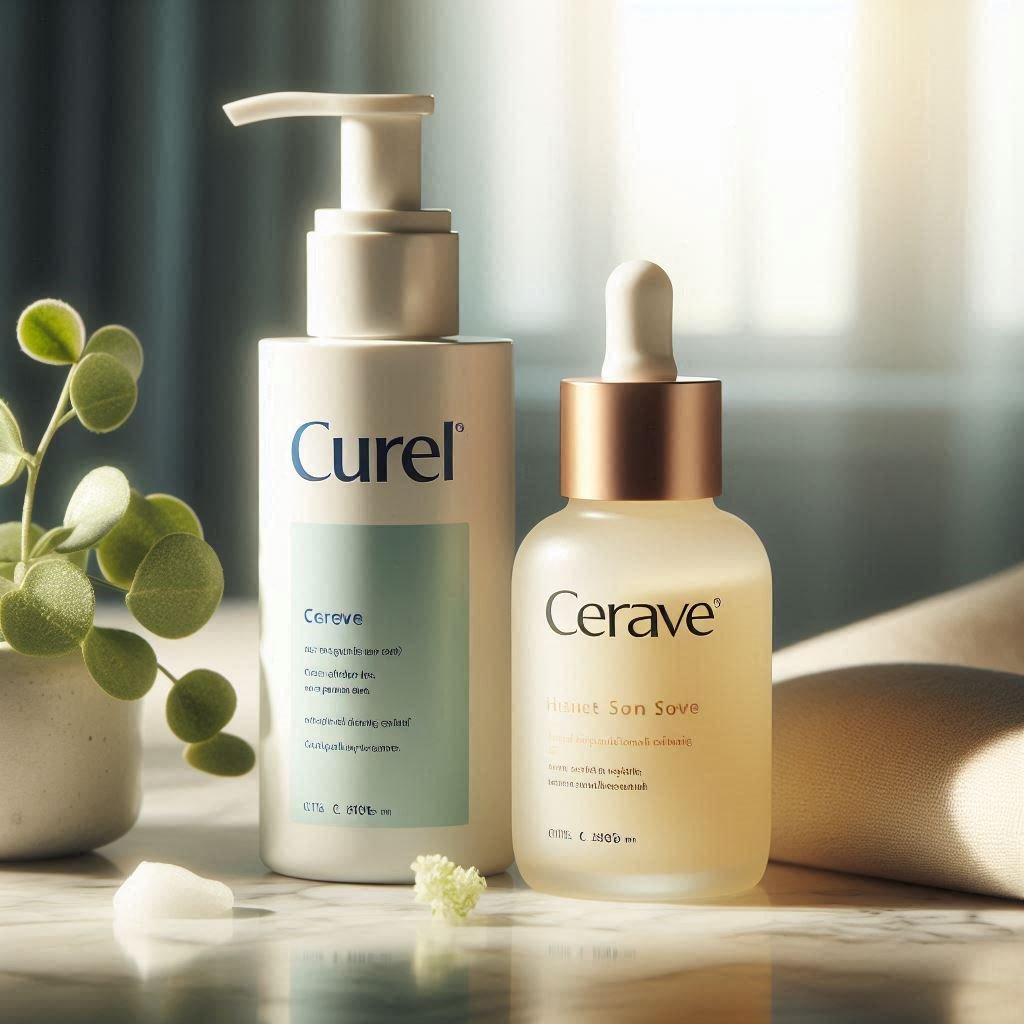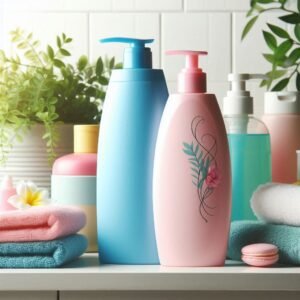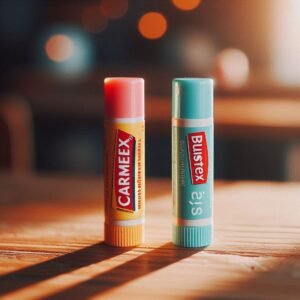Curel Vs Cerave 2024 – You’re likely no stranger to the Curel vs CeraVe debate, but with so many options on the market, it’s hard to know which brand truly delivers. Both have their loyal followings, but what sets them apart? As you weigh the pros and cons of each, you’re probably wondering which one will actually address your specific skin concerns.
From dryness to sensitivity, the right moisturizer can be a game-changer. But which brand’s unique approach will give you the results you’re looking for? Let’s take a closer look at what makes Curel and CeraVe tick, and what you can expect from each.
A Quick Overview
- Curel focuses on intense moisturizing for dry skin, while CeraVe emphasizes repairing the skin’s natural barrier with ceramides.
- Curel’s rich formulas are better suited for dry or extremely dry skin, whereas CeraVe’s lightweight approach is ideal for combination or sensitive skin.
- CeraVe’s products often feature antioxidants like vitamin E and ferulic acid to combat environmental stressors, whereas Curel focuses on locking in moisture.
- Both brands offer gentle, non-irritating formulas, but CeraVe’s fragrance-free and hypoallergenic options make it a top choice for sensitive skin.
- Curel tends to be more budget-friendly, with prices ranging from $8 to $15, while CeraVe falls into the premium category, with prices between $13 and $25.
Brand Overview and History
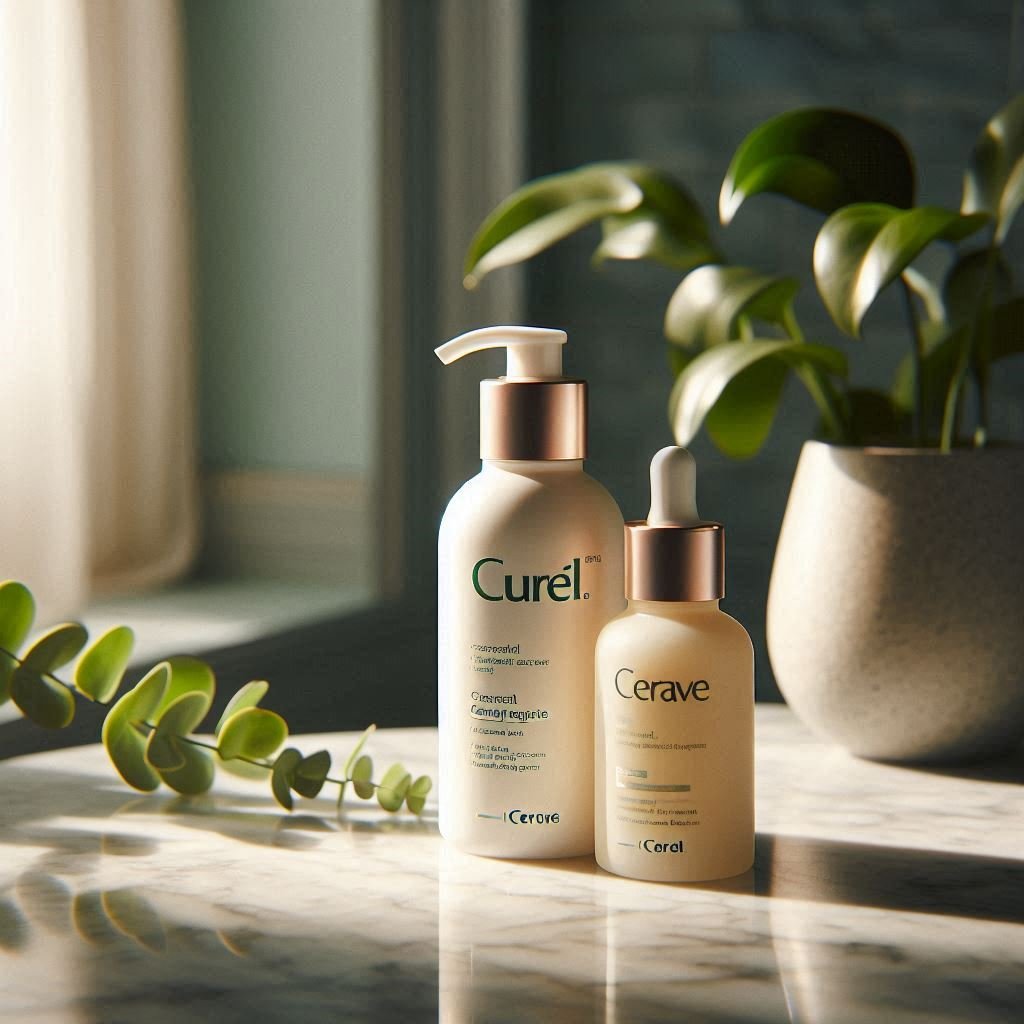
When exploring the world of moisturizing products, you’re likely to come across two prominent brands: Curel and CeraVe, both of which have established themselves as leaders in the skincare industry with rich histories and distinct philosophies.
Curel, founded in 1927, has built a loyal customer base by focusing on moisturizing solutions for dry, sensitive skin.
CeraVe, established in 2005, has gained a strong following by emphasizing the importance of ceramides in repairing the skin’s natural barrier.
Both brands have developed effective marketing strategies to foster brand loyalty, with Curel’s ‘softness for all’ mantra and CeraVe’s ‘repair and restore’ promise resonating with consumers.
Ingredients and Key Features
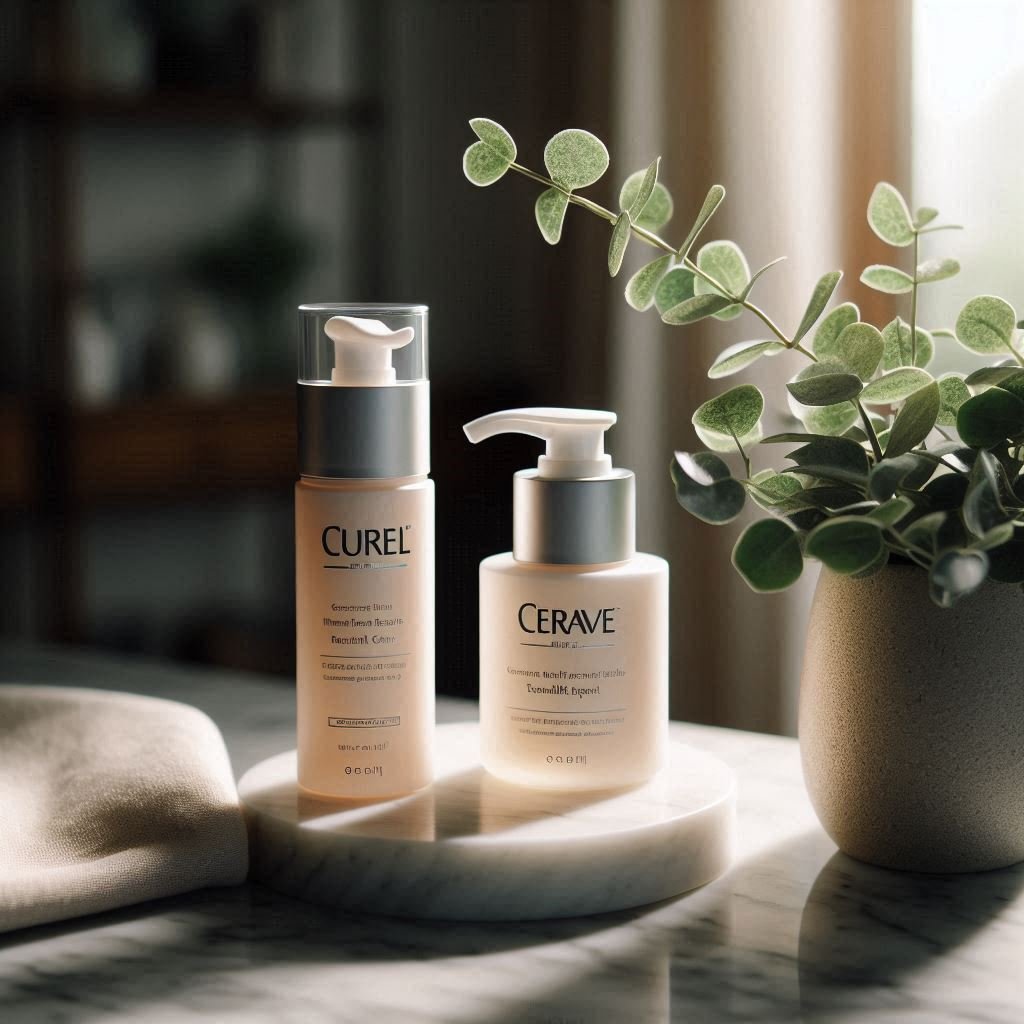
As you explore into the formulations of Curel and CeraVe products, you’ll discover distinct ingredient profiles that reflect each brand’s unique approach to skin health.
Curel’s formulas feature a blend of moisturizing actives, such as hyaluronic acid and glycerin, which work to lock in moisture and soothe dry skin.
In contrast, CeraVe’s products are built around their proprietary Multimolecular Repair Technology, which combines essential ceramides, hyaluronic acid, and other skin nourishers to repair and restore the skin’s natural barrier.
You’ll also notice that CeraVe products often include antioxidants like vitamin E and ferulic acid to combat environmental stressors.
Moisturizing Properties Compared
Both Curel and CeraVe products boast impressive moisturizing properties, but their formulations yield distinct performance differences in terms of intensity, duration, and skin type suitability.
Curel’s moisturizers often feature a blend of humectant molecules that attract and retain moisture, resulting in intense hydration that lasts for an extended period.
In contrast, CeraVe’s products tend to focus on repairing the skin’s natural barrier, which allows for a more gradual and sustained increase in hydration levels.
This difference in approach affects the products’ suitability for various skin types.
If you have dry or extremely dry skin, Curel’s intense moisturizing might be the better fit.
However, if you have combination or sensitive skin, CeraVe’s more subtle approach could be more beneficial.
Skincare Product Range Offerings
When exploring the skincare product range offerings of Curel and Cerave, you’ll find that both brands provide a spectrum of options to address your specific skin concerns.
You’ll want to examine their moisturizing body product options, facial skincare product lines, and specialty skin concern solutions to determine which brand better aligns with your needs.
Moisturizing Body Product Options
Your skin type and concerns dictate which moisturizing body products from Curel and Cerave are best suited for you, with both brands offering a range of formulas and textures to address specific needs.
If you’re looking to lock in moisture, Curel’s body butters might be the way to go. Rich in emollients and humectants, they provide long-lasting hydration for dry skin.
Cerave’s moisturizing body products, on the other hand, are designed to repair and restore the skin’s natural barrier. Their formulas are gentle and non-comedogenic, making them suitable for sensitive skin.
When it comes to your moisturizing routines, consider your skin’s unique needs and choose a product that fits your lifestyle. Whether you prefer a lightweight lotion or a rich cream, both Curel and Cerave have options to help you achieve healthy, glowing skin from head to toe.
Facial Skincare Product Lines
Both Curel and Cerave extend their moisturizing expertise to facial skincare, offering distinct product lines that cater to various skin types and concerns, including acne, aging, and sensitivity.
You’ll find a range of facial moisturizers, serums, and cleansers that fit seamlessly into your morning routine and nighttime ritual.
Curel’s facial products focus on hydration and nourishment, while Cerave’s offerings emphasize repair and restoration.
Whether you’re dealing with dryness, dullness, or irritation, both brands provide gentle, effective solutions.
Specialty Skin Concern Solutions
Beyond their core moisturizing products, Curel and Cerave offer targeted solutions for specific skin concerns, such as eczema, psoriasis, and rosacea, providing you with a range of treatments that address unique skin needs.
You can find products that cater to your individual skin concerns, ensuring you receive the best possible care.
Some examples of their specialty skin concern solutions include:
Curel’s Skin Rescue line, designed to soothe and calm irritated skin.
Cerave’s Skin Therapy products, which provide intense hydration and repair for dry, damaged skin.
Eczema-friendly products that reduce inflammation and discomfort.
Rosacea-targeted treatments that minimize redness and flare-ups.
Psoriasis-focused formulas that promote skin cell turnover and reduce scaly patches.
Product Texture and Absorption
When applying Curel and CeraVe moisturizers, you’ll immediately notice distinct differences in their textures, with Curel boasting a rich, luxurious feel that takes a few moments to fully absorb, while CeraVe’s lightweight, whipped formula sinks in quickly, leaving no residue.
Curel’s thick, creamy texture provides a silky finish, perfect for dry skin that craves intense hydration.
In contrast, CeraVe’s airy, non-greasy formula is ideal for oily skin or those who prefer a lightweight moisturizer.
As you massage the products into your skin, you’ll notice Curel’s rich feel lingering on the surface, whereas CeraVe’s formula disappears quickly, leaving your skin feeling smooth and refreshed.
These texture differences will help you decide which product is best suited for your skin type and personal preferences.
Skin Type Suitability Analysis
As you ponder the distinct textures of Curel and CeraVe, it’s clear that each is suited to specific skin types, and understanding their suitability is key to making an informed decision about which product to use.
When it comes to skin type suitability, some key factors to ponder:
Pore size matters: If you have large pores, Curel’s lightweight, non-comedogenic formula might be a better fit. On the other hand, CeraVe’s slightly thicker texture could be more suitable for smaller pores.
Your skin’s natural pH balance also plays a role: CeraVe’s products tend to have a more neutral pH, which might be better for sensitive skin, while Curel’s products have a slightly acidic pH, making them more suitable for normal to dry skin.
Dry skin: Curel’s moisturizing properties might be more beneficial for dry skin, while CeraVe’s products could be too rich.
Oily skin: CeraVe’s lightweight, oil-free formulas might be more suitable for oily skin, whereas Curel’s products could exacerbate oiliness.
Acne-prone skin: Both brands have products labeled as non-comedogenic, but CeraVe’s products might be more gentle on acne-prone skin due to their fragrance-free and hypoallergenic nature.
Benefits for Sensitive Skin
Both Curel and CeraVe offer benefits for sensitive skin, but the latter’s fragrance-free and hypoallergenic formulas make it a particularly attractive option for those who require gentle, non-irritating products.
If you have sensitive skin, you know how vital it’s to find products that won’t exacerbate irritation.
CeraVe’s formulas are designed to provide skin calming benefits, soothing comfort, and reducing inflammation.
Their products are carefully crafted to minimize the risk of allergic reactions, making them an excellent choice for sensitive skin.
By choosing CeraVe, you can trust that you’re giving your skin the gentle care it needs to thrive.
With CeraVe, you can say goodbye to irritation and hello to healthy, comfortable skin.
Ingredients to Avoid and Allergens
While CeraVe’s gentle formulas are designed to soothe sensitive skin, it’s equally important to know what ingredients to avoid, as some common allergens and harsh chemicals can quickly undo the benefits of a gentle skincare routine.
You want to steer clear of toxic additives that can irritate your skin and trigger allergic reactions.
Be on the lookout for:
- Artificial fragrances that can cause skin irritation
- Parabens, which have been linked to hormonal imbalances
- Sulfates, known to strip the skin of its natural oils
- Phthalates, which can disrupt the skin’s natural pH balance
- Formaldehyde-releasing agents, which can cause skin irritation and allergic reactions
Price Points and Value Comparison
Your skincare budget plays a significant role in determining which product line, Curel or CeraVe, ultimately ends up on your shelf, so making a thorough comparison of their price points and value is pivotal.
As you weigh your options, you’ll find that Curel offers more budget-friendly options, with prices ranging from $8 to $15 for individual products.
CeraVe, on the other hand, falls into the premium category, with prices between $13 and $25.
While CeraVe’s higher prices may seem intimidating, their products often come in larger sizes, making them a better value in the long run.
If you’re on a tight budget, Curel might be the way to go.
However, if you’re willing to invest in premium alternatives, CeraVe’s high-quality ingredients and larger sizes might be worth the extra cost.
User Reviews and Ratings Analysis
When evaluating the effectiveness of Curel and CeraVe products, it’s prudent to examine user reviews and ratings, which can provide valuable insights into how these products perform in real-world scenarios.
Some common warning signs of review authenticity issues include:
- Overly positive or negative reviews with little substance
- Reviews with identical language or sentence structures
- Reviews from accounts with little to no history
- Reviews that seem to be incentivized or biased
- Reviews that contradict the overall consensus
Be cautious of rating inconsistencies across different platforms or sites, as they can skew your perception of a product’s performance.
Final Verdict and Recommendation
Now that you’ve considered the user reviews and ratings analysis, it’s time to summarize the key takeaways and determine which brand is best suited for your skin type.
You’ll want to keep in mind the unique benefits and drawbacks of each brand as you make your decision.
In the following points, we’ll outline the recommended uses for Curel and CeraVe, helping you choose the best fit for your skin.
Key Takeaways Only
Based on our in-depth comparison, Curel and CeraVe both offer unique benefits, but if you prioritize intense moisturizing and repair, CeraVe’s product range might be the better fit for you.
As you weigh your options, remember that CeraVe’s ceramide-based formulas provide an extra layer of protection for dry, damaged skin.
Curel’s gentle, non-irritating ingredients make it an excellent choice for sensitive skin.
For summer skincare, CeraVe’s lightweight, oil-free moisturizers are perfect for hot weather.
Don’t believe the Skin Mythbusters: moisturizing doesn’t have to be a chore. Find a product that works for you and stick to it.
Ultimately, the decision comes down to your individual skin type and needs. Take the time to research and choose the best product for your unique skin concerns.
Recommended For Skin
You’ll want to choose CeraVe if you have dry, damaged, or compromised skin that requires intense repair and protection, as their ceramide-based formulas provide an extra layer of defense against environmental stressors.
On the other hand, if you’re looking for a brand that offers a wider range of products for specific skin concerns, such as hyperpigmentation or acne, Curel might be the better fit for you.
Ultimately, the decision comes down to your individual skin goals and where you’re on your skin journey.
If you’re seeking to repair and protect your skin, CeraVe is the way to go.
But if you’re looking for a more targeted approach to address specific skin concerns, Curel’s diverse product line might be more suitable for you.
Conclusion
You’ve now got an exhaustive understanding of the Curel vs CeraVe debate.
Both brands have their strengths, but it’s vital to ponder your individual skin type and needs.
If you prioritize intense hydration and soothing dry skin, Curel might be the better choice.
However, if you’re looking to repair your skin’s natural barrier with ceramides, CeraVe is the way to go.
Ultimately, make an informed decision based on your skin’s unique requirements.

